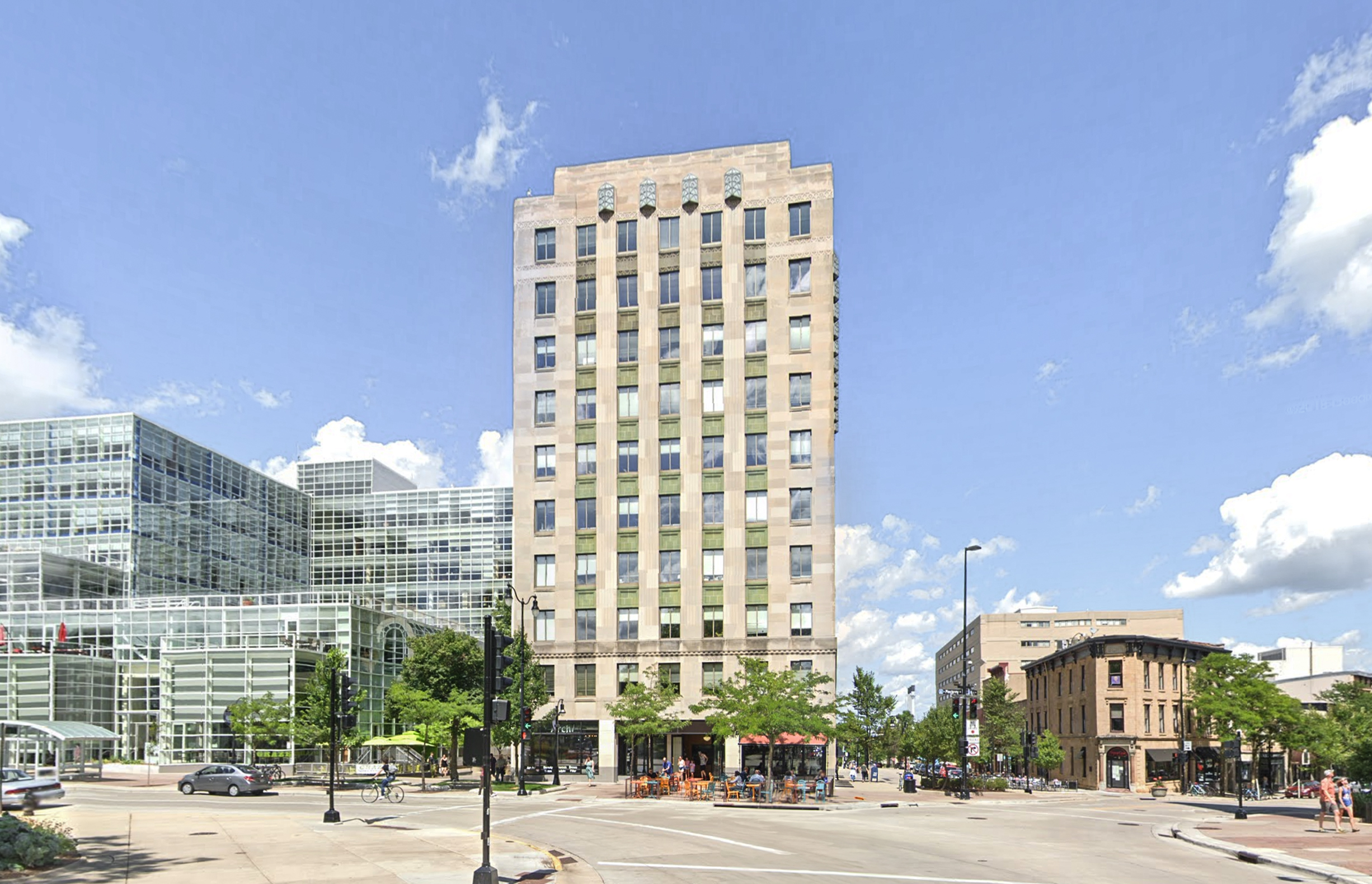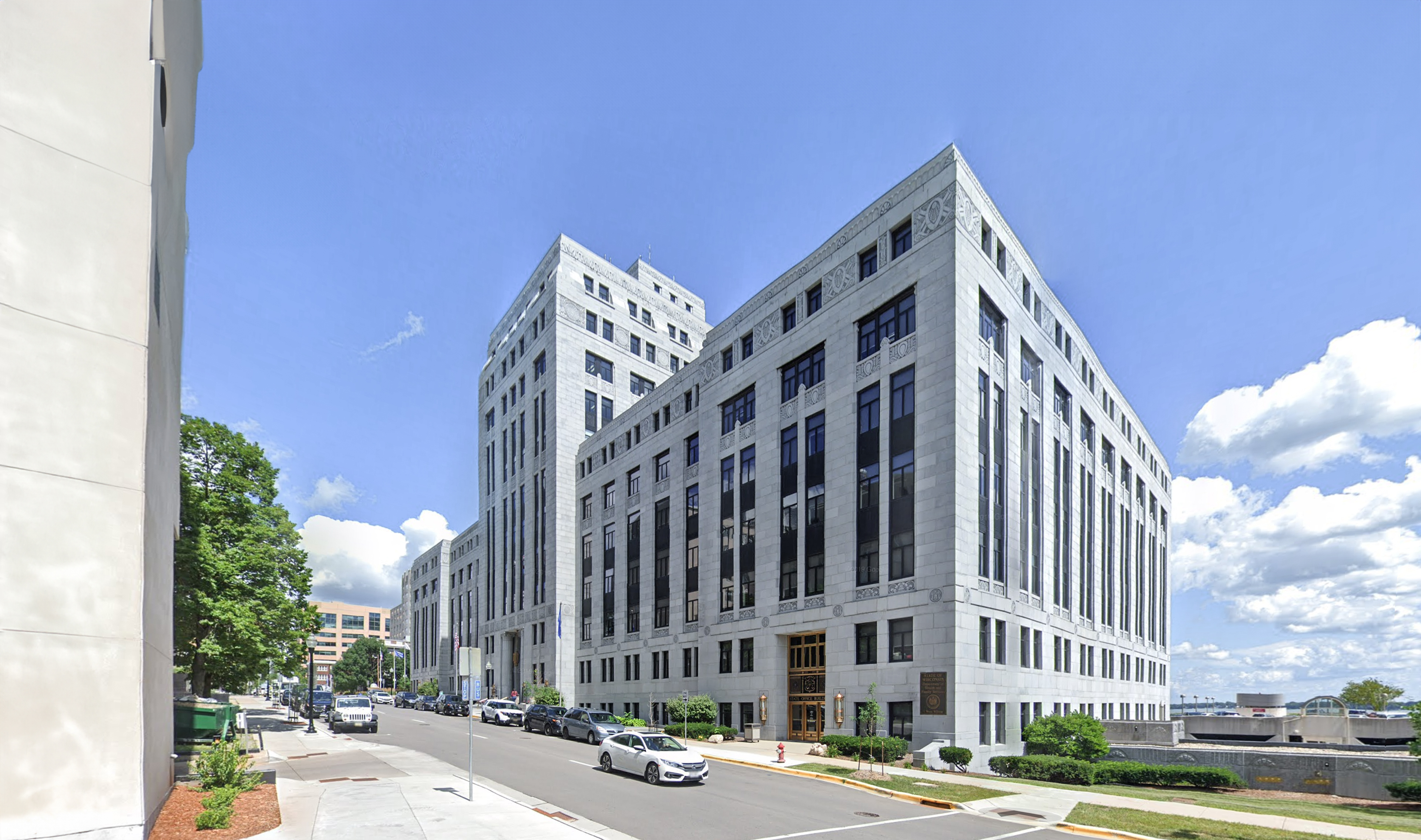The Tenney Building is an Art-deco skyscraper designed in 1928 by Law, Law & Potter, and built between 1929 and 1930, for a reported $1.20 million dollars, in Madison, WI.
Tenney Building is not the only name you might know this building by though. The building is, or has also been known as Tenny Plaza.
Its precise street address is 110 E. Main Street, Madison, WI. You can also find it on the map here.
The Tenney Building is a structure of significant importance both for the city of Madison and the United States as a nation. The building embodies the distinctive characteristic features of the time in which it was built and the Art Deco style. Because of that, the Tenney Building was officially included in the National Register of Historic Places on October 26th 2017.
The building underwent a major restoration in 1985.



